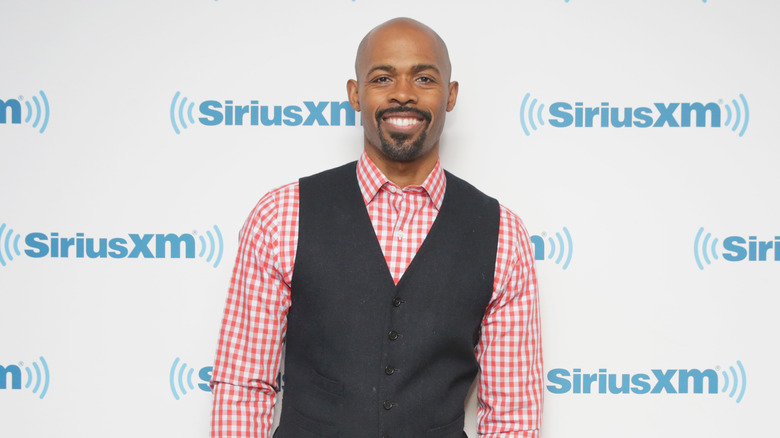The Bicep Curl Mistake Dr. Ian Smith Avoids At All Costs
Form is everything when it comes to exercise, especially when weights are involved. This is why most fitness professionals will tell you to leave your ego at the door before you enter a gym: because it really isn't about lifting heavy and exposing yourself to risk of injury, but about focusing on the correct posture and movement in order to attain the results you're after.
We make mistakes, though. Whether you're following a fast-paced tutorial from a female celebrity workout routine, you're new to the world of exercise, or you've been working out for years but you're just not feeling the mind-to-muscle connection, sometimes the wrong form can creep into our workout sessions.
This is why physician, author, and "The Doctors" host Dr. Ian Smith's advice on a bicep curl mistake we might be making is relevant. Bicep curls are probably one of the most popular, if not common, weighted exercises out there, but they're also surprisingly easy to get wrong if you're not paying attention to the basics. "One of the common mistakes I can't stand seeing people do is a bicep curl [while] swaying — they go up and they're moving everything when they're doing their curl. The weight is too heavy," explained Dr. Smith, demonstrating the incorrect posture via an Instagram video post. Here's how you should be doing the exercise instead, according to the celebrity.
Bring your elbows in, drop the weight, and focus on posture
"Tuck your elbows to your side, make your trunk (torso) nice and stationary, bend your knees, and [go] nice and easy," says Dr. Ian Smith, author of "The Met Flex Diet: Burn Better Fuel, Burn More Fat."
Focusing on the correct posture helps you isolate the muscles you want and get the contraction you want, added the celebrity. When you pick a heavier weight than you can handle, you end up using different muscles to complete the exercise, which defeats the purpose of the bicep curl. You might use your shoulders, hips, and lower back (while swaying back and forth to accommodate the movement of the exercise), when what you should be using are the front muscles of your arms. Whether you're sculpting and strengthening those muscles for visual effect or practical reasons, like being able to lift something heavy off the floor, it's important to do the exercise the right way.
Choose a weight you can handle and repeat the exercise 10 to 12 times, according to the physician. Other things to keep in mind include not swaying your hips from side to side and only moving your forearms while performing a bicep curl. If it helps, back up against a wall or sit on a bench to avoid exercising the wrong muscles or putting strain on your back. Speaking of back strain, when is back pain a problem after exercise?
This is when back pain after exercise should cause concern
It is natural to feel some amount of muscle soreness (delayed-onset muscle soreness, or DOMS) after a grueling workout. After a day of core or back workouts, your lower back could feel sore too. But incorrect posture while doing bicep curls, crunches, squats, and other exercises can give rise to back pain as well.
If your soreness persists for over 72 to 96 hours after exercise and is particularly debilitating (it's affecting how you sleep, get up, walk around, etc.), then it might be a sign of a more serious injury, according to experts. Another thing to keep in mind is if the pain came on suddenly during an exercise. DOMS is typically a late reaction to a fitness session, whereas an injury might be more sudden and immediate. If your back pain is accompanied by numbness, tingling, or pain radiating to your legs, you should definitely book an appointment with your specialist. It might also be a sneaky cause of intense back pain that's unrelated to working out.
Additionally, a word of caution about following video tutorials of celebrity workout routines or even attempting yoga and pilates poses that don't have a preview of the next exercise coming up on the screen. Doing something fast-paced, especially when you can't remember what the next exercise is, and not taking sufficient time to pay attention to form, can lead to injury. It might also be helpful to check out Dr. Ian Smith's simple exercise to strengthen your back.


